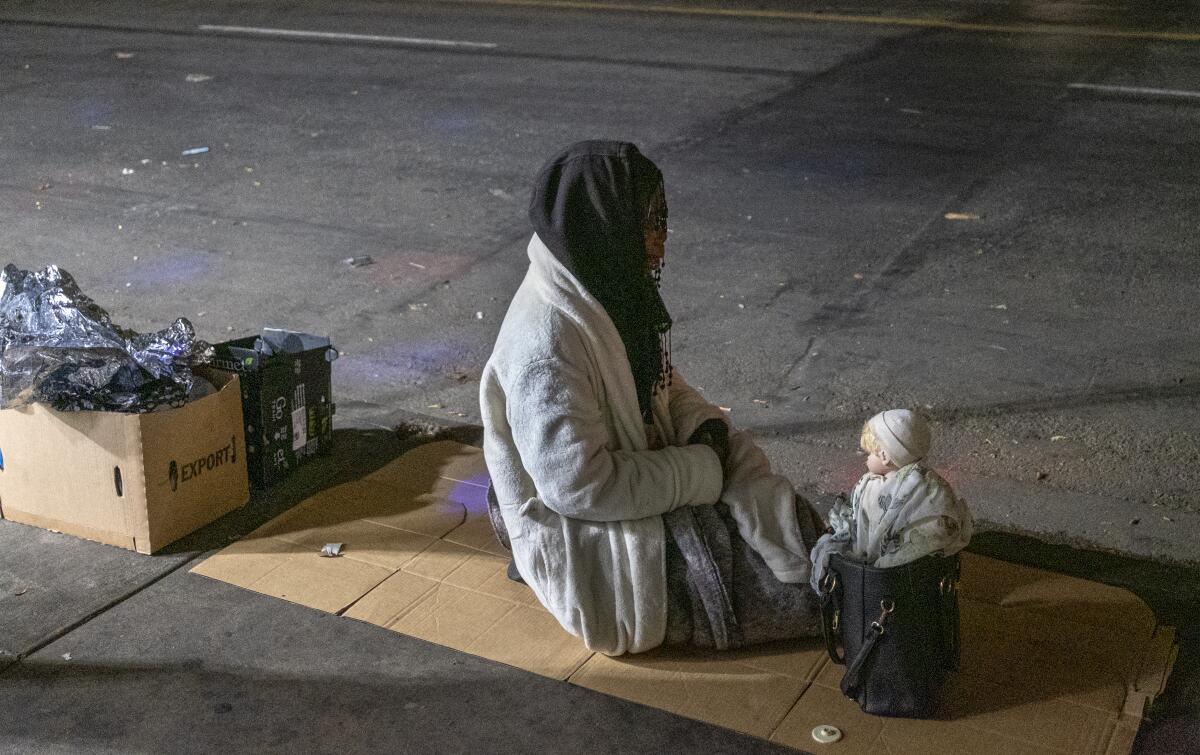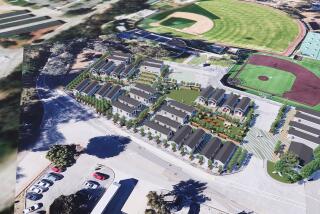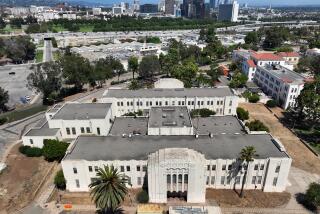Editorial: What Judge Carter’s order to shelter skid row homeless people got right — and wrong

U.S. District Judge David O. Carter’s controversial order to shelter or house every homeless person on Los Angeles’ skid row within 180 days paints a withering picture of the inability of city and county leaders to make even a dent in homelessness despite their urgent calls for action year after year. It’s also a devastating indictment of institutional racism as a driver of the forces that led to the impoverishment of Black people, who now make up a disproportionate share of the local homeless population. All of that is inarguable.
Using that as his backdrop, Carter got some things in his sweeping order right — and a number of things so wrong they could hamstring the efforts that will get people off the streets permanently. The city plans to appeal Carter’s order, which came in response to a lawsuit against the city and county by a group of downtown business owners and residents. The county, which finances and provides services for homeless people, has already filed an appeal.
Here are two things Carter got right in his order:
He turned up the heat on Mayor Eric Garcetti and the City Council to translate the urgency of their rhetoric into action. One crucial step he pinpointed was the need to change the land-use policies that have led to the severe lack of housing at the heart of the homelessness crisis. City leaders have enormous power over land-use and housing — yet they’ve consistently refused to make it easy to build the quantity of housing we desperately need, and they’ve maintained decades-old zoning policies that perpetuate segregation and inequality. Council members are quick to appease homeowners who oppose more dense development and taller buildings.
The judge wants the council’s Homelessness and Poverty Committee to report back on specific actions to address racial and economic inequities as well as possible changes to land-use laws to allow more apartments and, thus, more affordable housing throughout the city. Frankly, we wish Carter could have ordered city leaders to rezone. If this order evolves into a settlement, the judge should go further and extract a rezoning commitment from the city.
Carter is also right to demand an accounting of the funds that go to housing and services. And his request that City Controller Ron Galperin put together a list of all government-owned land available in each council district for housing and sheltering homeless people could be a gold mine. But it’s not enough just to compile a list of properties that appear available, which Galperin has already done to a large extent. The controller will need to determine how underutilized they really are.
Those steps on land-use and auditing are helpful and important. But here are six things Carter’s order got wrong:
The centerpiece of the judge’s order is a mandate that city officials shelter or house everyone on skid row in the next six months. But to put such a tight deadline on it means the city will have little choice but to reach for the easiest, quickest way to comply, and that is to put them into shelters. The tens of millions of dollars they will spend to do so could have been better spent on permanent housing.
Shelter is not cheap. The transitional shelters that Garcetti built all around the city cost millions of dollars apiece. Some of the new villages of tiny homes did as well. Even a safe campground requires the land, security, food and water, portable toilets, and a service provider to work with people.
Carter also ignores the fact that people cannot be forced into shelter against their will. It can take outreach workers weeks if not months to persuade homeless people to accept a shelter bed; this is a population inured to the hardships of the streets, many suffering from addiction or mental illness, and suspicious of other outreach workers who made promises they didn’t keep.
The order treats skid row’s homeless population as an identifiable group, when in fact the population fluctuates. The last homeless count, carried out in January 2020, showed that 4,662 homeless people lived on skid row. But that’s a snapshot; in addition to the people who come and go on the street, there are those who move into and out of interim shelters in the neighborhood.
To pay for his mandates, the judge ordered the city to set aside $1 billion — the amount Garcetti had proposed to spend on all of the city’s homelessness efforts in the next fiscal year. It’s absurd to hijack that entire sum, which the city doesn’t actually have on hand, for sheltering skid row residents.
The biggest reason not to freeze that money is that more than a third of it is Proposition HHH funds earmarked for permanent housing projects already in development. The HHH bond measure has been under fire for its slow pace and lower than expected production. But when it comes to homelessness, nothing in this city is more difficult to create and more desperately needed than permanent housing. And HHH units come with services to help homeless people grapple with their problems. To attempt to divert money from HHH to anything other than permanent housing is shortsighted and unforgivable, if it’s even legal.
Finally, Carter’s order temporarily barred the city from transferring any of the property it owned, which also threatens five HHH-funded projects that are set to start construction and awaiting a transfer of city land upon which to build. Stopping these projects, which would create 423 units of homeless housing, would be utterly counterproductive.
Carter later clarified his order, saying projects “in process” could proceed. That’s a start. But there is a lot more in there to be fixed, and soon.
More to Read
A cure for the common opinion
Get thought-provoking perspectives with our weekly newsletter.
You may occasionally receive promotional content from the Los Angeles Times.










